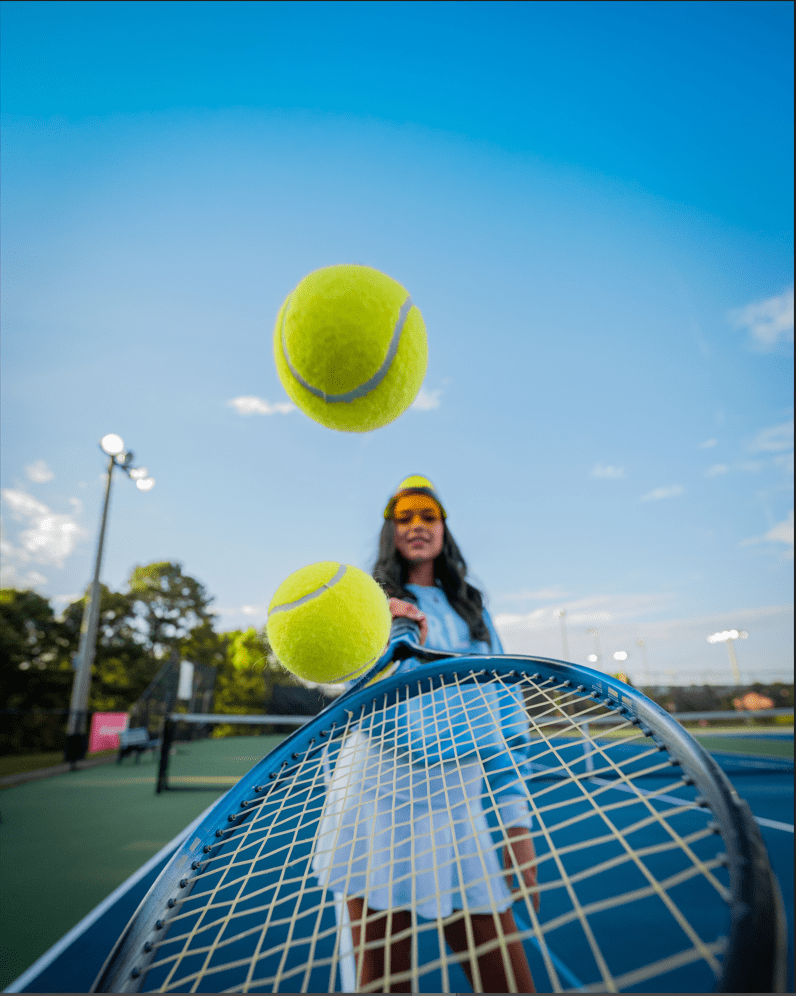
History of Table Tennis
Table tennis can trace its roots back to England in the late 19th century, where it was initially played as a parlor game among the upper class. It was often referred to as “whiff-whaff” due to the distinctive sound the ball made when struck. However, it was only a matter of time before the game’s popularity spread to other parts of the world.
The sport quickly caught on, and the first official table tennis tournament was held in 1902 in London. By 1921, the Table Tennis Association was formed, establishing the rules and regulations for the game. Table tennis began to gain international recognition, and in 1926, the International Table Tennis Federation (ITTF) was founded, providing a unified governing body for the sport worldwide.
Table tennis made its debut in the Olympics in 1988 as an official event and has since become a staple of the games, thrilling audiences with its lightning-fast rallies and incredible displays of skill.
Rules and Gameplay
Table tennis is played on a rectangular table with a net dividing it into two equal halves. The basic rules are quite simple: the ball must be struck over the net and into the opponent’s side of the table, with the goal of winning points. A point is scored when the opponent fails to return the ball within the rules of the game.
The serve is a crucial aspect of table tennis. It must be delivered from an open palm, and the ball must bounce once on the server’s side before crossing the net and bouncing once on the receiver’s side. The receiver must return the serve by hitting the ball over the net, and the rally begins.
Explore the world of sports, from table tennis to kho kho Rules, with expert insights, news, and tips. Stay ahead in the game
The game can be played as singles (one player against another) or doubles (two players on each side). Each player or team serves for two consecutive points, and then the opposing player or team serves for two points, and so on. The first player or team to score 11 points and be ahead by at least 2 points wins the game. A match is usually the best of three, four, or seven games.
Table tennis is known for its blistering pace, quick reflexes, and incredible spin. Players use various techniques to make the ball curve, dip, and spin unpredictably, making it challenging for their opponents to return. Topspin, backspin, sidespin, and no-spin shots are all part of a player’s arsenal.
Equipment
Table tennis equipment is crucial to the game, and players use specialized gear to maximize their performance. The key pieces of equipment are the table, the ball, and the racket.
-
Table: The standard table tennis table is 9 feet in length, 5 feet in width, and 30 inches in height. The playing surface should be made of a high-quality wood and painted with a low-friction coating to ensure a consistent bounce.
-
Ball: The official table tennis ball is made of celluloid or plastic and is 40mm in diameter. It is hollow, lightweight, and has a matte finish to ensure smooth play. The ball must meet specific size and weight requirements set by the ITTF.
-
Racket: Also known as a paddle or bat, the table tennis racket consists of a blade and two rubber sheets. The blade is usually made of wood and can be a variety of thicknesses. The rubber sheets are attached to both sides of the blade and can have different types of rubber with varying levels of grip and spin. Players customize their rackets to suit their playing style.
Athleticism in Table Tennis
Table tennis might be a sport that’s often played in your basement, but don’t let that fool you. It requires an incredible amount of athleticism and skill.
-
Speed and Reflexes: Table tennis rallies can be lightning-fast, with balls flying back and forth at over 100 miles per hour. Players must react in a split second to return these shots.
-
Endurance: A single game of table tennis can last several minutes, and a match can go on for hours. Players need to maintain their physical and mental endurance to stay competitive.
-
Footwork: Rapid movement around the table is essential. Players must get into position quickly and maintain balance to execute shots effectively.
-
Spin Control: Mastering different types of spins, including topspin, backspin, and sidespin, is crucial for success. Players must have a delicate touch and precise control over their racket to manipulate the ball’s trajectory.
-
Strategy: Beyond physical abilities, players must be highly strategic. They need to anticipate their opponent’s moves and adapt their tactics throughout the match.
Table tennis also requires intense focus and concentration. A lapse in concentration can result in missed shots and lost points. This mental aspect of the game is often as important as physical skill.
Professional Table Tennis
Table tennis has a thriving professional circuit, with numerous tournaments held worldwide. The sport is particularly popular in Asian countries, with China dominating the international scene. Chinese players have consistently been ranked among the world’s best for decades, and their rivalry with players from Europe and other regions is legendary.
The pinnacle of professional table tennis is the Olympic Games, where players from all over the world compete for the gold medal. The singles and doubles events are highly anticipated, featuring incredible athleticism and some of the most memorable moments in Olympic history.
Professional table tennis players are well-trained athletes who dedicate their lives to the sport. They undergo rigorous training regimens to develop their skills, physical fitness, and mental resilience. This dedication to excellence has made table tennis a showcase of human ability and has elevated it to a globally recognized sport.
The Popularity of Table Tennis
Table tennis is one of the most popular recreational sports in the world, and its appeal extends beyond the professional level. It’s played in homes, schools, and community centers, making it accessible to people of all ages and skill levels. Its low cost, minimal space requirements, and the ability to play indoors make it a favorite pastime for many.
Table tennis also has a significant following online, with countless videos of incredible rallies and trick shots shared on platforms like YouTube. It’s a sport that can be enjoyed both as a participant and as a spectator.
Moreover, it has a unique charm that appeals to all generations. Older players appreciate the nostalgia of playing a game they grew up with, while younger generations are drawn to the fast-paced nature of the sport and the opportunity to showcase their skills in a dynamic and engaging way.
Table Tennis as a Lifelong Sport
Table tennis is not only a sport for the young; it’s a lifelong activity that can be enjoyed by people of all ages. It’s low-impact, making it an ideal choice for those looking to stay active while minimizing the risk of injury. The sport also sharpens hand-eye coordination, focus, and mental agility, which are valuable skills that benefit people of all ages.
For seniors, table tennis offers the opportunity to stay physically active and mentally engaged. It’s a fantastic way to socialize, stayTable Tennis: A Fast-Paced Journey through the World of Ping Pong
Table Tennis, also known as ping pong, is a sport that has captured the hearts of millions around the globe. This fast-paced game combines agility, precision, and strategy, making it one of the most engaging and popular sports in the world. With origins dating back to the late 19th century, table tennis has evolved into a highly competitive sport, with enthusiasts from all walks of life, from casual players in the garage to elite athletes competing in international tournaments. In this 1200-word exploration, we’ll delve into the history, rules, equipment, and some of the top players in the world of table tennis.
A Historical Spin: Origins and Evolution
Table tennis had a rather humble beginning as a parlour game in Victorian England. It was initially known as “whiff-whaff” and was played with makeshift equipment like balls made of champagne corks and paddles made from cigar box lids. This simple game soon found its way into the leisure activities of the British elite.
As the game grew in popularity, the equipment evolved. Celluloid balls and wooden paddles became the standard. The sport’s name changed from “whiff-whaff” to “ping pong” due to the distinctive sound the ball made upon contact with the table and paddle. The term “ping pong” was trademarked in the United States, and the game was officially known by this name for many years.
The International Table Tennis Federation (ITTF) was established in 1926, and it standardized the rules and regulations of the sport. In 1928, the ITTF decided to use the name “table tennis” to avoid trademark issues. From that point, “table tennis” became the universally accepted name for the sport.
The sport continued to grow, and in 1988, it was included in the Olympic Games, providing a platform for the best players in the world to showcase their skills.
The Game of Precision: Rules and Gameplay
Table tennis is played on a rectangular table divided by a net. The standard dimensions for a table tennis table are 9 feet in length, 5 feet in width, and 2.5 feet in height. The net is placed at the center, creating two equal halves for the players. The game can be played in both singles and doubles formats.
The objective of the game is simple: to score points by making the ball land in the opponent’s side of the table while following certain rules:
-
Service: The game begins with a serve. The server tosses the ball, hits it, and it must bounce once in their half of the table before crossing the net to the opponent’s side. The ball must land on the opponent’s side, aiming to make it as difficult as possible for them to return the ball.
-
Rally: Once the ball is in play, players take turns hitting it back and forth. The ball must be struck above the table and below the waist.
-
Scoring: A point is scored when one player fails to return the ball within the rules. A game is typically played to 11 points, and a match is best of 5 games. In case of a 10-10 tie in a game, the game continues until one player leads by two points.
-
Serve Rotation: In doubles, the serving team rotates their serves after every two points.
-
Let: If the ball hits the net during a serve and still lands in the correct service area, it is called a “let,” and the point is replayed. During a rally, if the ball touches the net but still goes over to the opponent’s side, the rally continues.
-
Out of Bounds: The ball is considered out if it hits the edges of the table, fails to land in the opponent’s side, or is struck out of turn.
-
Foot Faults: Players must keep one foot behind the end line during serves.
-
Time Rules: A point should be completed within 20 minutes, or it is awarded to the server.
Table tennis is known for its incredible speed and precision. The top players are not only skilled at making powerful shots but also at controlling the spin and placement of the ball, which adds an extra layer of complexity to the game.
The Tools of the Trade: Equipment
Table tennis equipment plays a crucial role in the performance of players. Let’s take a closer look at the essential gear for this sport:
-
Table: The playing surface should be smooth, level, and have a uniform bounce across its entire length and width.
-
Paddles (Rackets): Table tennis paddles are typically made of wood and rubber. The rubber comes in various styles, offering different levels of spin and control. Players often customize their paddles to suit their playing style.
-
Balls: Official table tennis balls are made of celluloid or plastic and are 40 millimeters in diameter. They come in various qualities and are color-coded, typically white or orange.
-
Net and Posts: The net should be 15.25 centimeters high, spanning the width of the table, and securely attached to posts on each side.
-
Apparel: Comfortable, breathable, and non-restrictive clothing and proper footwear are essential for table tennis players.
-
Table Tennis Robot: Some players use a table tennis robot for practice. It’s a machine that can feed balls to the player to simulate different types of shots and practice specific skills.
The Titans of Table Tennis: Legendary Players
Table tennis has seen numerous legendary players who have left an indelible mark on the sport. Some of the most notable figures include:
-
Jan-Ove Waldner: Known as the “Mozart of Table Tennis,” Waldner is a Swedish player with a unique and creative playing style. He won the World Championships in 1989 and an Olympic gold medal in 1992.
-
Ma Long: A Chinese player, Ma Long is often referred to as “The Dragon.” He’s won multiple World Championships and Olympic gold medals, dominating the sport for an extended period.
-
Zhang Jike: Another Chinese player, Zhang Jike achieved a “Grand Slam” by winning the Olympics, World Championships, and World Cup in a single calendar year (2012).
-
Deng Yaping: One of the most successful female players, Deng Yaping won four Olympic gold medals and is renowned for her precision and agility.
-
Timo Boll: A German player who has consistently been one of the top-ranked players in the world for over a decade. His versatility and powerful forehand are his trademark.
-
Liu Guoliang: A former Chinese player and coach who has contributed significantly to the sport, both as a player and as the head coach of the Chinese national team.
Table Tennis Today: Popularity and Global Reach
Table tennis has come a long way since its inception as a parlor game. It is now played and loved by millions of people worldwide. The sport enjoys popularity in countries like China, Japan, Germany, Sweden, and South Korea, where it is a national pastime. The Chinese, in particular, have dominated the sport for decades, consistently producing world-class players.
The Olympics have played a pivotal role in promoting table tennis on a global scale. The sport’s inclusion in the Summer Olympics has given it a stage for the




